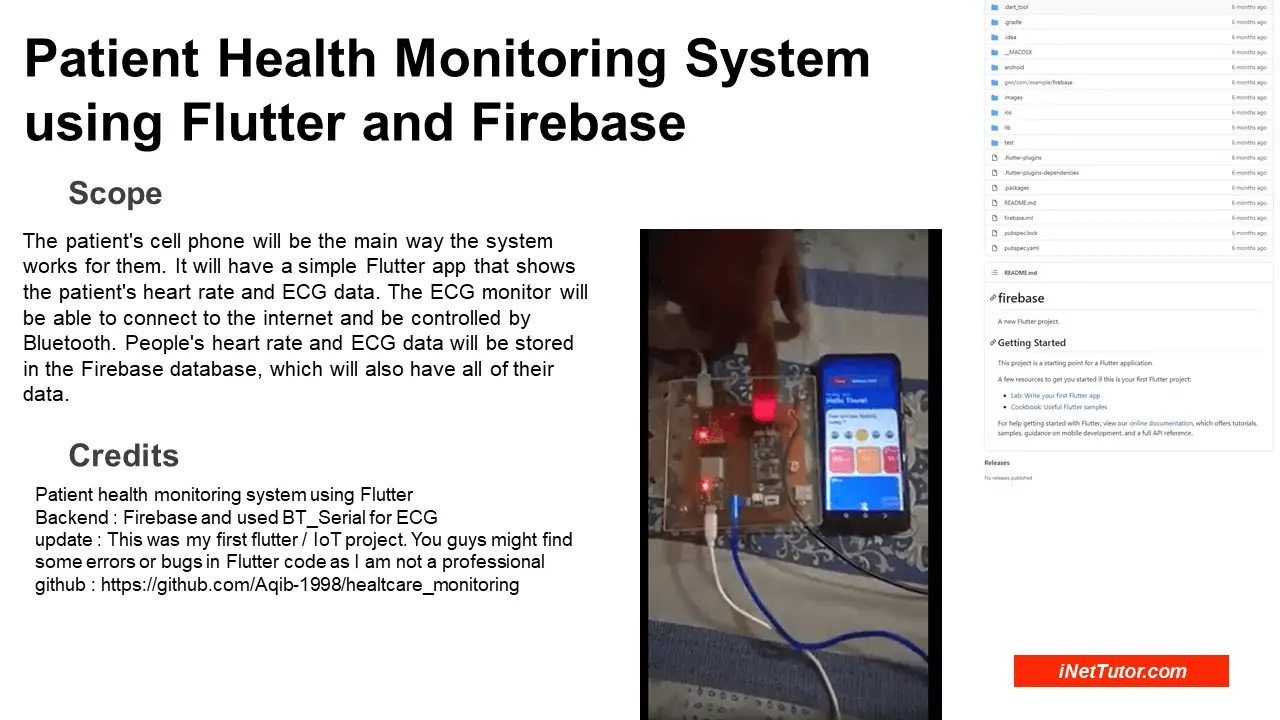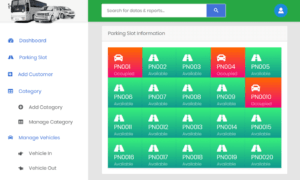Medical Diagnosis and Analysis using AI
Introduction
Table of Contents
Artificial Intelligence (AI) has rapidly emerged as a transformative force across various industries, revolutionizing the way we live, work, and interact with technology. In the healthcare sector, AI’s capabilities are being harnessed to enhance patient care and improve outcomes. From predictive analytics to robotic surgery, AI’s applications in healthcare are vast and varied. One of the most promising and impactful uses of AI is in medical diagnosis, where it has the potential to significantly improve accuracy, efficiency, and speed.
Accurate and timely medical diagnosis is crucial for effective treatment and patient care. Early detection of diseases can often be the difference between life and death, especially in cases of cancer, cardiovascular diseases, and other critical conditions. Traditional medical diagnosis relies heavily on the expertise of healthcare professionals, extensive testing, and the analysis of medical histories. While this method has been the cornerstone of healthcare for decades, it is not without its challenges. Human error, limited access to specialists, and the sheer volume of medical data can lead to delays, misdiagnoses, and inconsistent results.
This is where AI-driven diagnosis comes into play. By leveraging advanced algorithms, machine learning, and big data, AI can analyze vast amounts of medical information quickly and accurately. AI systems can process and interpret complex data from medical images, electronic health records, and genomic data, identifying patterns that may be missed by human eyes. This capability not only enhances the accuracy of diagnoses but also reduces the time needed to arrive at critical medical decisions.
The potential benefits of AI-driven diagnosis are profound. AI can assist healthcare professionals by providing decision support, reducing diagnostic errors, and enabling personalized treatment plans. Furthermore, AI can help bridge the gap in healthcare accessibility by providing diagnostic tools that can be used remotely, benefiting patients in underserved areas. As AI continues to evolve, its integration into medical diagnosis promises a future where healthcare is more precise, proactive, and accessible, ultimately leading to better patient outcomes and improved quality of life.

AI Techniques for Medical Diagnosis
Artificial Intelligence is revolutionizing the field of medical diagnosis by introducing advanced techniques that allow for faster, more accurate, and efficient analysis of medical data. Here are some of the key AI techniques being employed in medical diagnosis:
- Machine Learning Algorithms
Machine learning (ML) is a subset of AI that involves training algorithms to learn from data and make predictions or decisions. In medical diagnosis, ML algorithms are trained on vast datasets, including patient records, medical images, and genomic data, to identify patterns and predict outcomes. There are several types of machine learning algorithms used in healthcare:
- Supervised Learning: In supervised learning, algorithms are trained on labeled data, meaning that the input data is paired with the correct output. For example, a supervised learning model might be trained to distinguish between healthy and cancerous tissue using a set of labeled medical images. Once trained, the model can classify new, unseen images with a high degree of accuracy. This approach is commonly used for tasks such as disease classification, risk assessment, and outcome prediction.
- Unsupervised Learning: Unlike supervised learning, unsupervised learning works with unlabeled data. The algorithm identifies patterns and relationships within the data without prior knowledge of the outcomes. In the medical field, unsupervised learning is used for clustering patients with similar characteristics, detecting anomalies in medical images, or identifying unknown subtypes of diseases.
- Deep Learning: A specialized form of machine learning, deep learning uses artificial neural networks to model and understand complex patterns in data. Deep learning is particularly effective in processing large and complex datasets, such as medical images and genomic sequences. Convolutional Neural Networks (CNNs), a type of deep learning model, are widely used for image recognition tasks, including detecting tumors in radiology images and identifying retinal conditions from eye scans.
- Natural Language Processing (NLP) for Medical Records Analysis
Natural Language Processing (NLP) is a branch of AI focused on the interaction between computers and human language. In healthcare, NLP is used to analyze and interpret the vast amount of unstructured data found in medical records, clinical notes, and research papers. NLP techniques can extract relevant information such as patient symptoms, diagnoses, treatment plans, and outcomes from textual data, providing valuable insights for clinical decision-making.
- Medical Record Summarization: NLP algorithms can automatically summarize patient records, highlighting key information such as medical history, current conditions, and treatment plans. This helps healthcare providers quickly access relevant information, improving efficiency and patient care.
- Clinical Decision Support: By analyzing clinical notes and electronic health records (EHRs), NLP can assist in identifying potential diagnoses, suggesting treatments, and flagging possible medication interactions or allergies. This enhances the decision-making process and reduces the likelihood of errors.
- Sentiment Analysis: NLP can also be used to analyze patient feedback, reviews, and social media posts to gauge patient satisfaction and identify areas for improvement in healthcare services.
- Image Recognition and Analysis for Medical Imaging
Medical imaging is a critical component of diagnosis and treatment planning. AI-powered image recognition and analysis techniques have significantly advanced the field of radiology and pathology, enabling more accurate and faster interpretations of medical images.
- X-rays and MRIs: AI algorithms, particularly CNNs, are adept at analyzing X-ray and MRI images to detect abnormalities such as fractures, tumors, and lesions. These algorithms can identify subtle differences in images that may be overlooked by human radiologists, leading to earlier detection and better treatment outcomes.
- CT Scans: AI can assist in interpreting CT scans, identifying conditions like pulmonary nodules, brain hemorrhages, and cardiovascular diseases. By automating the analysis process, AI reduces the workload on radiologists and speeds up diagnosis.
- Digital Pathology: In pathology, AI is used to analyze tissue samples and histopathology slides, identifying cancerous cells and other abnormalities. AI-driven image analysis can quantify the extent of disease, assess the effectiveness of treatments, and provide prognostic insights.
The integration of AI techniques in medical diagnosis not only enhances the accuracy and speed of diagnoses but also empowers healthcare professionals with tools to make more informed decisions. As these technologies continue to evolve, they hold the promise of improving patient outcomes and transforming the landscape of healthcare.
Project Ideas Medical Diagnosis and Analysis using AI
Here are 15 project ideas in medical diagnosis and analysis using AI, ranging from practical applications to research-focused initiatives:
- AI-Powered Early Detection of Skin Cancer
- Develop a mobile application using computer vision to analyze skin lesions and moles, classifying them as benign or malignant. Utilize a pre-trained deep learning model, such as a convolutional neural network (CNN), to identify early signs of skin cancer.
- Predicting Disease Outbreaks Using AI and Big Data
- Create a predictive model using machine learning algorithms to analyze epidemiological data, social media trends, and environmental factors to forecast disease outbreaks (e.g., influenza, COVID-19) and provide early warnings.
- Automated Detection of Diabetic Retinopathy
- Build an AI model using deep learning to analyze retinal images and detect signs of diabetic retinopathy. This project could use datasets like EyePACS and employ CNNs for image recognition tasks.
- AI-Based Breast Cancer Detection in Mammograms
- Develop a system that uses deep learning to analyze mammogram images for the detection of breast cancer. The project could focus on improving the accuracy and speed of diagnosis, potentially reducing false positives and negatives.
- Natural Language Processing for Clinical Note Analysis
- Create an NLP-based tool to automatically extract and summarize information from unstructured clinical notes in electronic health records (EHRs), helping doctors quickly access relevant patient information.
- Virtual Health Assistant for Remote Diagnosis
- Design a chatbot using AI and NLP that interacts with patients to collect symptoms and provide preliminary diagnostic information. This project could help triage patients and reduce the burden on healthcare professionals.
- Personalized Treatment Recommendations Using AI
- Build a machine learning model that analyzes patient data, including medical history, genetic information, and lifestyle factors, to recommend personalized treatment plans for chronic diseases like diabetes or hypertension.
- AI for Automated Radiology Reporting
- Develop a system that uses AI to analyze radiology images (X-rays, CT scans, MRIs) and generate automated reports, highlighting key findings and potential areas of concern. This could improve efficiency in radiology departments.
- Predictive Analytics for Patient Readmission Rates
- Create a predictive model using machine learning to analyze hospital data and identify patients at high risk of readmission, enabling healthcare providers to take preventive measures and improve patient care.
- Genomic Data Analysis for Precision Medicine
- Design a project that uses AI to analyze genomic data, identifying genetic markers associated with specific diseases. This project could focus on developing targeted therapies for conditions like cancer or rare genetic disorders.
- AI-Driven Analysis of EEG Data for Neurological Disorders
- Develop a system that uses machine learning to analyze EEG data to detect and predict neurological disorders such as epilepsy or Alzheimer’s disease, potentially leading to earlier interventions.
- Automated Histopathology Image Analysis
- Build an AI model to analyze histopathology slides, identifying cancerous tissues and other abnormalities. This project could focus on automating the detection of different types of cancer and improving diagnostic accuracy.
- Sentiment Analysis of Patient Feedback for Healthcare Improvement
- Create an NLP-based system to analyze patient feedback from surveys, reviews, and social media to gauge patient satisfaction, identify common concerns, and suggest areas for improvement in healthcare services.
- AI for Cardiac Health Monitoring and Diagnosis
- Develop a wearable device integrated with AI algorithms to monitor cardiac health metrics such as ECG, heart rate, and blood pressure, providing real-time alerts for arrhythmias, heart attacks, or other cardiovascular issues.
- Drug Discovery and Development Using AI
- Use machine learning models to analyze biochemical data and predict the efficacy of new drug compounds. This project could accelerate the drug discovery process and help identify potential treatments for various diseases.
These project ideas leverage the power of AI to address various challenges in medical diagnosis and analysis, offering innovative solutions that can improve healthcare outcomes and enhance patient care.
Challenges and Limitations of AI in Medical Diagnosis
While AI holds great promise for transforming medical diagnosis and improving patient outcomes, its implementation is not without challenges and limitations. Understanding these obstacles is crucial to harnessing AI’s potential effectively and ethically.
Data Privacy and Security
- Patient Data Protection: Ensuring the confidentiality and security of patient data is paramount. AI systems must adhere to strict privacy regulations and implement robust data protection measures.
- Data Sharing: Sharing patient data for AI research and development can pose privacy risks. Balancing the need for data with privacy concerns is crucial.
Regulatory and Ethical Issues
- Regulatory Approvals: Obtaining regulatory approval for AI-based medical devices can be a complex process. Ensuring compliance with regulatory standards is essential.
- Ethical Considerations: AI systems must be developed and deployed ethically, considering factors such as fairness, transparency, and accountability.
Technical Challenges
- Algorithm Limitations: AI algorithms may have limitations in handling complex medical cases or dealing with uncertainty.
- Data Quality and Quantity: AI models require large, high-quality datasets for training. Obtaining sufficient and representative data can be challenging.
- Interpretability: Understanding how AI models reach their conclusions is important for trust and accountability. Developing interpretable AI models can be difficult.
Bias in AI Models
- Data Bias: If the training data is biased, the AI model may also be biased, leading to inaccurate or discriminatory results.
- Algorithmic Bias: Bias can be introduced by the algorithms themselves, such as in the case of reinforcement learning.
- Addressing Bias: Identifying and mitigating bias in AI models is essential to ensure fairness and equity in healthcare.
Overcoming these challenges and limitations will be crucial for the successful integration of AI into medical diagnosis and the realization of its full potential.
Conclusion
AI’s role in enhancing medical diagnosis is becoming increasingly vital, offering the potential to transform healthcare by enabling more accurate, timely, and personalized diagnoses. From early detection of diseases through image recognition to analyzing vast amounts of patient data with natural language processing, AI provides tools that can improve patient outcomes and reduce the burden on healthcare systems. The ability of AI to handle large datasets and uncover patterns that may be invisible to the human eye makes it a powerful ally in the fight against both common and rare medical conditions.
To fully realize the potential of AI-driven healthcare solutions, continuous exploration and development are essential. Researchers, developers, and healthcare professionals must work together to address the existing challenges, such as data privacy concerns, regulatory hurdles, technical limitations, and bias in AI models. By fostering collaboration across these fields, we can create innovative, ethical, and effective AI tools that enhance healthcare delivery. Now is the time to push the boundaries of AI in medicine, ensuring that these technologies are developed and implemented in a way that truly benefits all patients and healthcare providers.
Readers are also interested in:
- List of 45 Best Nursing and Health Related IT Capstone Project
- Thesis and Capstone Project for IT, IS and CS Students
- 70+ Free and New Capstone Project Titles
You may visit our Facebook page for more information, inquiries, and comments. Please subscribe also to our YouTube Channel to receive free capstone projects resources and computer programming tutorials.
Hire our team to do the project.


